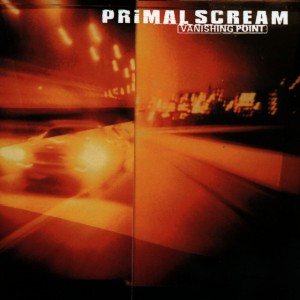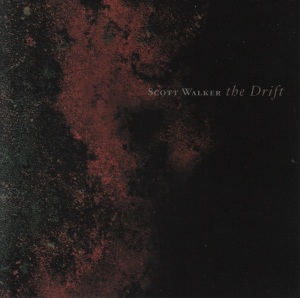
My second year participating in #MWE (Music Writers Exercise) where for the month of February, I listen to an album for the first time every day and tweet about it. A productive way to go through all the albums I’ve added to my Spotify library but haven’t yet made the time to listen to, but if I do it next year, it won’t be on Twitter, which has devolved into a ghost town/shit show since its unfortunate Musk-ification. These days, tweeting almost anything feels like flinging thoughts into a void and I didn’t experience nearly as much engagement as I did last year. Perhaps in 2024 I’ll try Facebook or Instagram or just save everything for here.
Here’s what I posted for February 2023:
1. Primal Scream, Vanishing Point (1997): Not as highly regarded as Screamadelica but maybe it should be for its sample-heavy, everything-but-the-kitchen-sink approach actually coheres. A close companion to Morcheeba’s debut from the year before, if not exactly trip-hop.
2. Peggy Lee, Sea Shells (1958): In stark contrast to the era’s maximalism, this is simply Lee trilling folk songs over harp and occasional harpsichord. Her readings of “Chinese Love Poems” anticipate the verses of “Is That All There Is?” minus the droll detachment.
3. Broken Social Scene, You Forgot It In People (2002): Harder to get a handle on than that other Canadian supergroup The New Pornographers, call it scrappy “Indie-rock” (for lack of a better term) with unflashy hooks even if “Pacific Theme” could almost be 1970s Chicago.
4. The Wild Tchoupitoulas, S/T (1976): A glorious one-off: Mardi Gras Indians performing Allen Toussaint-produced funk-rock. With songs primary about how much fun it is to be them, it emanates so much pure bliss, deserving a place on the shelf next to Dr. John’s Gris-Gris.

5. Robert Forster, The Candle and The Flame (2023): A beacon of solace in a world we have can’t control. Intimate and direct but rarely ever obvious. Might take weeks or months for some of these hooks to resonate but they’re there and just one facet of the grand design.
6. Charles Mingus, East Coasting (1957): Less formally radical than what he’d record in the following years but that doesn’t mean less effective or interesting. As always with Mingus, he constructs a nimble but solid foundation that encourages all the players on top to shine.
7. Gem Club, In Roses (2014): Could’ve been recorded in a bedroom or a cathedral. Near-ambient pop that probably needs more than one listen to sink in for all I can recall are the legato, echoing piano chords, occasional strings and Christopher Barnes’ ethereal sigh.
8. Meshell Ndegeocello, The World Has Made Me The Man Of My Dreams (2007): A groove record that, after caffeinated near-drum-and-bass salvo “The Sloganeer” drifts unpredictably but languorously like an ultra-chill George Clinton. Most revealing song title: “Elliptical”.
9. Neu!, S/T (1972): Today, I learned that Negativland named themselves after a track off this; also learned that (last track aside) this is far more accessible than what I expected of krautrock, so either it seems less radical than it did fifty years ago or I’m just a weirdo.

10. The Loud Family, The Tape Of Only Linda (1994): Okay, now I get why Aimee Mann liked Scott Miller enough to make an (unreleased) LP with him. This proves he did have a tight ten-track pop record in him; not that it would ever cross over like even Mann occasionally could.
11. Leonard Cohen, Recent Songs (1979): His only pre-2000 LP I hadn’t heard; coming off his Phil Spector disaster, it’s a model of restraint and consequently a tad boring until the Mariachi horns appear and one can safely resume questioning whether he’s being serious or not.
12. Yo La Tengo, This Stupid World (2023): Could be titled Death, Taxes and Yo La Tengo for all the consistency/dependability it emits. Not much stands out but everything coheres and gently sparkles like a vast starry night. Easy to take them for granted, so listen closely.

13. Van Dyke Parks, Discover America (1972): One of my more delightful first listens in months. Public domain tunes with a little whimsy, a lot of personality and as usual with Parks, ingenuous arrangements, anticipating those he’d compose with Nilsson for Altman’s Popeye.
14. Various Artists, One Kiss Can Lead To Another (2005): I thought this 52-minute digital distillation of an out-of-print, vintage girl group box set would be sufficient but now I wish I had access to the whole thing. An underrated genre from a not-so-innocent era, really.
15. FKA Twigs, MAGDALENE (2019): Obvious comparisons aside, I can’t get a handle on who she is which I suppose is the point. Acting unknowable can run the risk of obscurity but the production’s so striking it serves partially as a way in rather than just fancy window dressing.
16. Caroline Polachek, Desire, I Want To Turn Into You (2023): Likening her to Dido didn’t occur to me until she popped up on “Fly To You”; actually, this is near-worthy of early, edgier Sarah McLachlan, buffed and shined to a cool gleam other guest Grimes should aspire to.
17. Tennis, Pollen (2023): This couple/duo has raised “staying in one’s lane” to an art form but such interchangeability works when there’s consistency and ample hooks. Might sound better over retail loudspeakers than headphones but that comes down to one’s own preference.

18. Curtis Mayfield, Super Fly (1972): The joy in doing this exercise is to find a classic record you can’t believe you’ve never heard before. I don’t need to tell the world how sublime and definitive this soundtrack is, only to give it another chance if you’re unconvinced.
19. The Teardrop Explodes, Kilimanjaro (1980): On the basis of some of Cope’s solo work, not as wild and surely poppier than contemporaries such as Echo and The Bunnymen or The Soft Boys. Sirius XM’s “First Wave” could stand to play them (and so many other artists) more often.
20. The Upsetters, Blackboard Jungle Dub (1973): Knowing very little about dub reggae, this was exactly what I expected until it quoted both “Pop Goes The Weasel” and “Tijuana Taxi” in the same track. Such mischief broke up the repetition but was it more than just a goof?
21. Tame Impala, “Lonerism” (2012): The real test of a supposed stoner-friendly album is how well it holds up when listened to while sober. Even when favoring texture over melody, this makes the grade, though as a one-man band he might be better off revering Eno than Rundgren.
22. Life Without Buildings, Any Other City (2001): I spent years looking for this in used CD stores based on hype and hearsay; while it lives up to its postpunk-with-quirky-spoken-vocals description, not even that prepared me for Sue Tompkins’ cadences and fizzy demeanor.

23. Scott Walker, The Drift (2006): Sure, I prefer Walker’s more accessible earlier work, but there’s enough of it and this is purposely something else, pushing beyond accepted parameters of song structure toward a sound that’s compelling and confounding in equal measure.
24. Al Stewart, Past, Present and Future (1973): Of course he’s so much more than his two big hits even if those wistful, mealy vocals all but define him. Unlike fellow 70s art-poppers Supertramp, his wispy Anglo-quirk endures because he leans closer to folk-rock than prog.
25. Phish, The Story of The Ghost (1998): Got off the bus just prior to this one and I might’ve liked it more back then. Same issues as usual with them: heartfelt but patchy (and dorky), dexterous but diminished by studio confinement, insular despite all the genre-blending.
26. U.S. Girls, Bless This Mess (2023): “Fonky” as opposed to funky. Emulates Steely Dan, quotes from Jimi Hendrix and sounds like Daft Punk. Best songs are about monkey suits and the color spectrum. Increasingly slick and exceedingly weird (and enough to hold my attention.)
27. Destroyer, Trouble In Dreams (2008): Barely hints at the big pivot Bejar would make three years later on Kaputt but I’ll give him this: over time, I’ve pivoted from him as that guy w/the annoying voice in The New Pornographers to someone incapable of making a bad record.
28. Robert Wyatt, Shleep (1997): Tuneful and dissonant (often simultaneously), he seems as versed in and enticed by classic rock tropes as with free-floating, sing-song poetic improvisation. Challenging but rarely boring, not one second of it feels wasted or redundant.